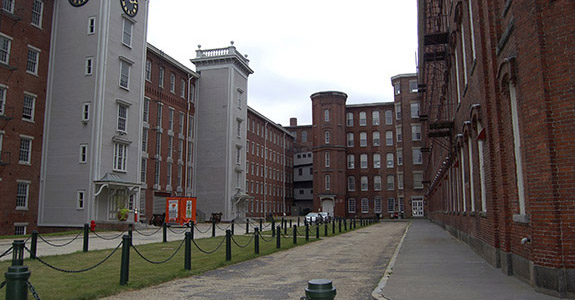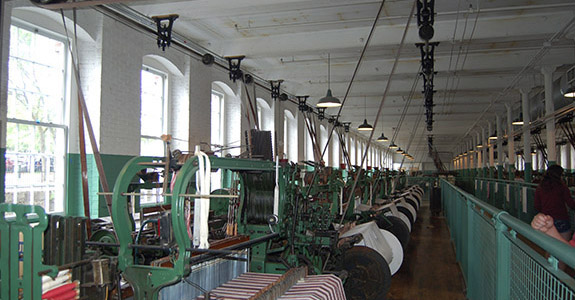
Visiting Boott Cotton Mill is an important lesson in the industrial revolution of this country. Rising like a cathedral, this huge building complex reminded me of fortress. Built in the 1830's and opened for 100 years, this factory used the raw cotton shipped from plantations in the south and turned into cotton fabric. Head upstairs to the mill room, and you experience what it was like for that factory workers most of whom were women. After heading upstairs before going on the factory floor, we punched our time card. Once inside, the machines were very loud, and the room was hot. Thankfully a lot of dust was not flying around as would have been the case when they would have been in full production. What's so great when you see these places, is that you realize this history did not happen in black and white like you see in so many textbooks. It happened in color to real people like us. Before labor laws were enacted, kids like my own would be working in the factory too. Watch carefully how the machines work to turn cotton thread into cloth. Because of our trip to New Mexico watching the weavers in Chimayo, my kids had a pretty good understanding of how a loom operates. It was fascinating to see how fast these worked when they were operated with power from the river below. It was pretty easy to see how workers would get injured. Afterwards, we walked through the museum section, and really learned about the politics of the mill. How the mills depended on the plantations to supply cotton cheaply and how families sent sons and daughters to work in the mill on a contract for 6 months at a time. We walked away with an amazing understanding of the production cycle of cotton and the different machinery on the different levels of the mill. We all thought it was extremely educational and very well presented. And the next time any of us puts on a cotton shirt, we will really understand all that went in to make it.








